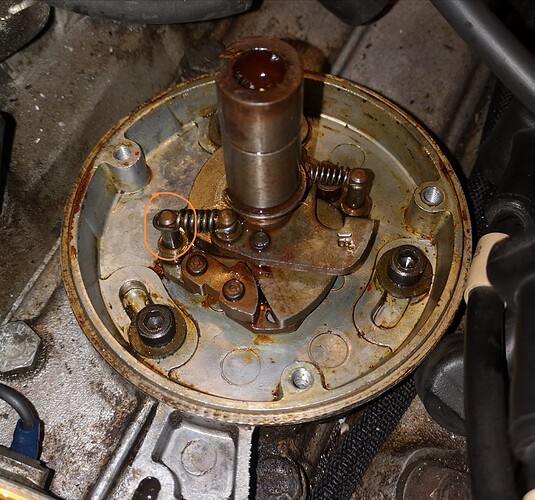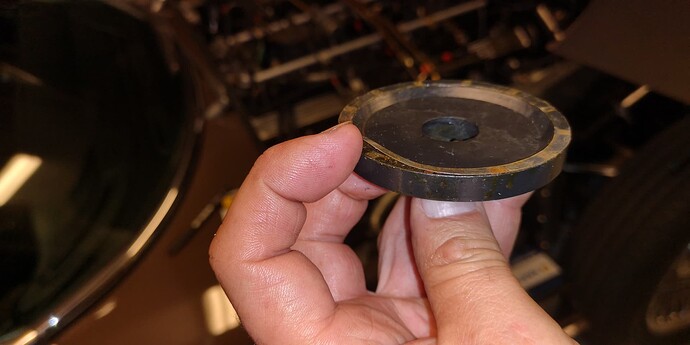Here, I’ll copy and paste that for ya:
TIMING THE PRE-H.E.: The procedure is described in the ROM, section 86.35.29/7. Basically, you disconnect the vacuum advance, lower the idle to make sure you’re off the bottom of the centrifugal advance curve, and set the timing at 10º BTDC. Much easier than the H.E. procedure!
On the other hand, there’s a very good reason the H.E. went to setting the timing at 3000 RPM instead of at idle. You’re not likely to burn pistons at idle; it is far more important that the timing is correct at highway speeds. The H.E. procedure minimizes the impact of variances in the advance mechanism: If the distributor isn’t quite within tolerances, the timing will still be correct at 3000 and will merely be off at idle instead. Much safer.
So, why don’t we adapt the H.E. timing procedure to the pre-H.E.? Roger Bywater: “What you are saying is absolutely correct and setting the timing at low speed before any advance takes effect is just about the worst way of doing it. In all normal operating conditions the advance could in theory be 4 degrees out yet still be within spec. Allowing for wear and tear, not to mention questionable original build quality, the error could easily be more than that.”
Bywater went on to provide at-speed timing specs for all pre-H.E. V12’s:
Carburetted V12’s 35° BTDC @ 4000 RPM
D Jetronic: 33° BTDC @ 4000 RPM
10:1 CR pre-H.E. Digital P 24° BTDC @ 3000 RPM
You just can’t get a better authority than Roger Bywater; he was the guy leaning over a screaming V12 in an engine testing room at Jaguar dialing the advance up and down by hand to develop these advance specs.
Yes, the numbers for the pre-H.E.’s sound like a lot more advance than the H.E.; that’s the nature of the beasts – the H.E. gets less advance from the centrifugal mechanism and more from the vacuum capsule than the pre-H.E.
So here’s the new and improved procedure for timing the pre-H.E. V12: Warm up the engine, disconnect and plug the vacuum advance, rev the engine up a little past the specified RPM and then come back down to it and hold it there, and set the timing to the specified advance.
Of course, one problem is that the scale on the timing plate doesn’t go far enough. So, set the crank at 20° BTDC and paint a new mark on the damper at 0°. Then you can use this new mark to set the timing at the spec minus 20°.





